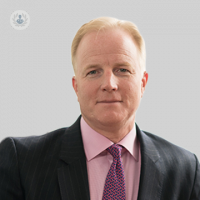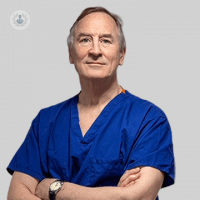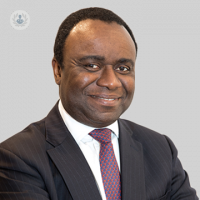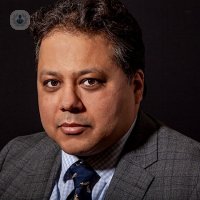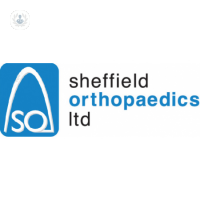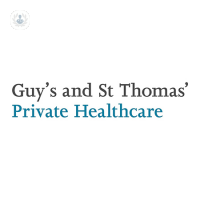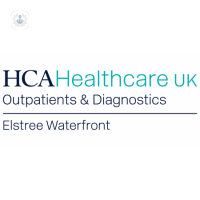What is scoliosis?
Scoliosis is the lateral curvature of the spine that most commonly occurs in children aged 10 to 15, before puberty, however, sometimes babies can be born with the condition. Scoliosis can be mild, and may not require treatment, however, some cases can get worse with age and growth, causing spinal deformities that in some cases can be disabling. Children who develop scoliosis are monitored closely to make sure the curve of the spine does not worsen, and if it does, treatment is required.
The monitoring and treatment of scoliosis is performed by an orthopaedic surgeon, specialising in the spine.
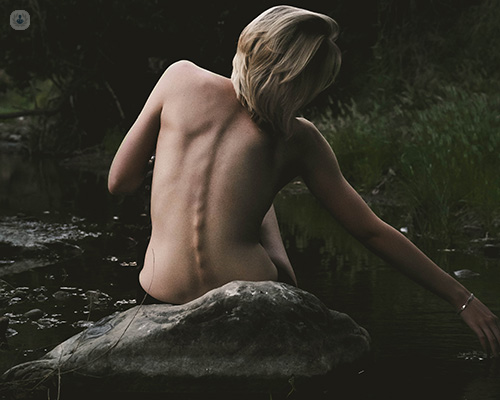
What are the symptoms?
Symptoms and signs of scoliosis include:
- uneven shoulders
- curved spine
- one shoulder or hip that sticks out
- protruding ribs to one side
- back pain (although this is more common in adults with the condition)
Causes of scoliosis
In most cases of scoliosis, the cause is unknown. These cases are known as idiopathic scoliosis and cannot be prevented. It has been linked to a combination of factors, including poor posture, diet and exercise.
Other cases of scoliosis may be caused by:
- Cerebral palsy or muscular dystrophy – these cases are known as neuromuscular scoliosis.
- Age – with ageing, the spine can become damaged through wear and tear. These cases are known as degenerative scoliosis and affects adults.
- Birth defects – sometimes the spines does not develop properly in the womb. These cases are called congenital scoliosis.
Risk factors for developing scoliosis include:
- Gender – males and females develop scoliosis at the same rate, however, females have a bigger risk of the condition worsening and needing treatment.
- Family history – scoliosis can be hereditary and run in families.

How can scoliosis be prevented?
Although scoliosis cannot be prevented, there are treatments available that aim to stop the curve of the spine from getting worse.
What are the treatments for scoliosis?
The type of treatment you receive depends on age, how bad the curve is and the likeliness of the curve worsening with time. Some cases won’t require treatment at all. The main types of treatment are braces or surgery.
Braces are normally recommended for children with a worsening spinal curve. Although a brace won’t cure scoliosis, they aim to stop the curve from getting worse. Braces are typically made from plastic and fit closely to the contour of the body. They are worn underneath clothing and are worn day and night. The more the brace is worn, generally the more effective it will be. Braces do not create many restrictions, and children can usually participate in sports and activities. A child will stop wearing the brace once their bones have ceased to grow.
For more severe curves in children, surgery will be required. This surgery involves inserting extendable rods alongside the spine. The rods can be extended as the child grows, usually every six months. Once the child has stopped growing, the rods will be removed.
Surgical options for young adults and older adults is most commonly spinal fusion. Spinal fusion involves the fusion of two or more vertebrae so that they can no longer move independently.
Other treatment options for adults include:
- painkillers – to relieve pain causes by scoliosis.
- spinal injections – to relieve pressure on spinal nerves which can cause some pain or numbness in the lower back.
- exercise – exercise that strengthens the back can help to manage associated pain. This can be done with a physiotherapist.
Scoliosis
Mr Sean Molloy - Orthopaedic surgery
Created on: 11-13-2012
Updated on: 10-25-2023
Edited by: Jay Staniland
What is scoliosis?
Scoliosis is the lateral curvature of the spine that most commonly occurs in children aged 10 to 15, before puberty, however, sometimes babies can be born with the condition. Scoliosis can be mild, and may not require treatment, however, some cases can get worse with age and growth, causing spinal deformities that in some cases can be disabling. Children who develop scoliosis are monitored closely to make sure the curve of the spine does not worsen, and if it does, treatment is required.
The monitoring and treatment of scoliosis is performed by an orthopaedic surgeon, specialising in the spine.

What are the symptoms?
Symptoms and signs of scoliosis include:
- uneven shoulders
- curved spine
- one shoulder or hip that sticks out
- protruding ribs to one side
- back pain (although this is more common in adults with the condition)
Causes of scoliosis
In most cases of scoliosis, the cause is unknown. These cases are known as idiopathic scoliosis and cannot be prevented. It has been linked to a combination of factors, including poor posture, diet and exercise.
Other cases of scoliosis may be caused by:
- Cerebral palsy or muscular dystrophy – these cases are known as neuromuscular scoliosis.
- Age – with ageing, the spine can become damaged through wear and tear. These cases are known as degenerative scoliosis and affects adults.
- Birth defects – sometimes the spines does not develop properly in the womb. These cases are called congenital scoliosis.
Risk factors for developing scoliosis include:
- Gender – males and females develop scoliosis at the same rate, however, females have a bigger risk of the condition worsening and needing treatment.
- Family history – scoliosis can be hereditary and run in families.

How can scoliosis be prevented?
Although scoliosis cannot be prevented, there are treatments available that aim to stop the curve of the spine from getting worse.
What are the treatments for scoliosis?
The type of treatment you receive depends on age, how bad the curve is and the likeliness of the curve worsening with time. Some cases won’t require treatment at all. The main types of treatment are braces or surgery.
Braces are normally recommended for children with a worsening spinal curve. Although a brace won’t cure scoliosis, they aim to stop the curve from getting worse. Braces are typically made from plastic and fit closely to the contour of the body. They are worn underneath clothing and are worn day and night. The more the brace is worn, generally the more effective it will be. Braces do not create many restrictions, and children can usually participate in sports and activities. A child will stop wearing the brace once their bones have ceased to grow.
For more severe curves in children, surgery will be required. This surgery involves inserting extendable rods alongside the spine. The rods can be extended as the child grows, usually every six months. Once the child has stopped growing, the rods will be removed.
Surgical options for young adults and older adults is most commonly spinal fusion. Spinal fusion involves the fusion of two or more vertebrae so that they can no longer move independently.
Other treatment options for adults include:
- painkillers – to relieve pain causes by scoliosis.
- spinal injections – to relieve pressure on spinal nerves which can cause some pain or numbness in the lower back.
- exercise – exercise that strengthens the back can help to manage associated pain. This can be done with a physiotherapist.
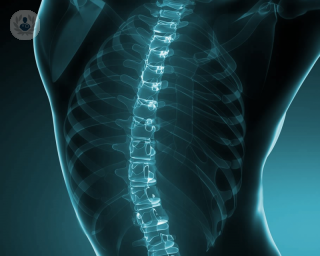

What causes adolescent scoliosis?
By Mr Shakil Patel
2024-11-21
Here, Mr Shakil Patel, a highly regarded and experienced consultant orthopaedic surgeon, explains what adolescent scoliosis is, whilst also outlining the causes and main symptoms. See more
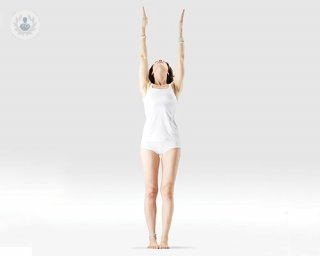

Scoliosis surgery – what are the latest advances?
By Mr Sean Molloy
2024-11-20
Leading consultant orthopaedic surgeon, Mr Sean Molloy explains the latest advances in scoliosis surgery, and the options available to the patient. See more
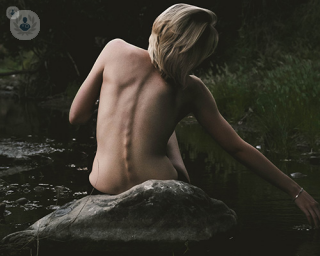

What are the symptoms and signs of scoliosis?
By Professor Hilali Noordeen
2024-11-20
In this article, highly experienced consultant orthopaedic spinal surgeon, Professor Hilali Noordeen, sheds light on the symptoms, causes, and treatment options associated with scoliosis. See more
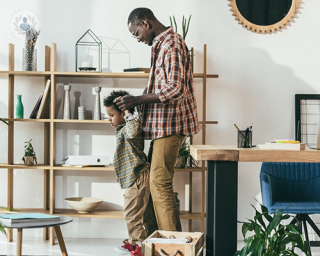

Magnetic growing rods: exciting advances in the treatment of early onset scoliosis
By Mr Colin Nnadi
2024-11-19
While early onset scoliosis (EOS) is rare, it can develop any time between birth and the age of ten, so it is important to watch your child and check for the symptoms of the condition. Mr Colin Nnadi, expert paediatric spinal surgeon, explains the latest developments in spinal surgery, and how they can benefit children diagnosed with EOS. See more
Experts in Scoliosis
-
Mr Sean Molloy
Orthopaedic surgeryExpert in:
- Minimally invasive spinal surgery
- Scoliosis
- Spine fracture
- Robotic surgery
- Spinal surgery
- Spinal fusion
-
Mr Jonathan Lucas
Paediatric orthopaedicsExpert in:
- Traumatic injury
- Paediatric orthopaedics
- Scoliosis
- Sport growth factors
- Sports injuries
- Spinal surgery
-
Professor Arun Ranganathan
Orthopaedic surgeryExpert in:
- Scoliosis
- Spinal column
- Minimally invasive spinal surgery
- Degenerative disc disease
- Spinal injections
- Spinal fusion
-
Mr Colin Nnadi
Orthopaedic surgeryExpert in:
- Trapped nerve
- Spinal stenosis
- Scoliosis
- Spinal surgery
- Spine fracture
- Back pain
-
Mr Dimpu Bhagawati
Orthopaedic surgeryExpert in:
- Discectomy
- Kyphoplasty
- Minimally invasive spinal surgery
- Sciatica
- Spinal surgery
- Scoliosis
- See all

Sheffield Orthopaedics Ltd
Sheffield Orthopaedics Ltd
Claremont Hospital, 401 Sandygate Rd, Sheffield
No existe teléfono en el centro.
By using the telephone number provided by TOP DOCTORS, you automatically agree to let us use your phone number for statistical and commercial purposes. For further information, read our Privacy Policy
Top Doctors

Guy’s and St Thomas’ Private Healthcare
Guy’s and St Thomas’ Private Healthcare
Guy’s Hospital, Great Maze Pond
No existe teléfono en el centro.
By using the telephone number provided by TOP DOCTORS, you automatically agree to let us use your phone number for statistical and commercial purposes. For further information, read our Privacy Policy
Top Doctors

Elstree Waterfront Outpatients Centre (HCA)
Elstree Waterfront Outpatients Centre (HCA)
Elstree Road, WD6 3BS
No existe teléfono en el centro.
By using the telephone number provided by TOP DOCTORS, you automatically agree to let us use your phone number for statistical and commercial purposes. For further information, read our Privacy Policy
Top Doctors
-
Sheffield Orthopaedics Ltd
Claremont Hospital, 401 Sandygate Rd, Sheffield, SheffieldExpert in:
- Hip
- Orthopaedic surgery
- Orthopaedic spinal surgery
- Shoulder and elbow
- Joint replacement
-
Guy’s and St Thomas’ Private Healthcare
Guy’s Hospital, Great Maze Pond, SE1 South Bank LondonExpert in:
- Allergy
- Cardiology
- General Surgery
- Maxillofacial Surgery
- Thoracic Surgery
- Maternity care
-
Elstree Waterfront Outpatients Centre (HCA)
Elstree Road, WD6 3BS, ElstreeExpert in:
- Blood test
- Cardiology
- Dermatology
- Diagnostic Imaging
- Neurology
- Paediatrics
- See all
- Most viewed diseases, medical tests, and treatments
- Undescended testicle (Cryptorchidism)
- Joint pain
- Lumbar herniated disc
- Abdominal pain
- Spinal surgery
- Minimal access surgery (keyhole surgery)
- Shoulder pain
- Parkinson's disease
- Osteoporosis
- Botulinum toxin (Botox™)
